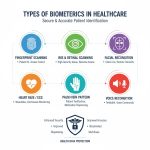Global In-Dash Navigation System Market Poised for Major Expansion — Projected to Surpass USD 34.09 Billion by 2030
The global In-Dash Navigation System Market stands on the threshold of robust expansion. These vehicle-integrated systems—offering real-time routing, 3D/2D maps, infotainment, and connectivity—are increasingly essential in modern automobiles. Leveraging data from Vantage Market Research, this release provides a forward-looking outlook through 2035, outlining 2024 revenue, forecasted growth, segmentation, competitive concentration, and recent innovation spotlight from leading automakers.
Our comprehensive In-Dash Navigation System Market report is ready with the latest trends, growth opportunities, and strategic analysis. View Sample Report PDF.
Key Takeaways
- 2024 Revenue: Market valued at USD 18.78 billion.
- 2035 Forecast: Projected to reach USD 34.09 billion by 2030, growing at a CAGR of 11.30% from 2023 to 2033; in-dash systems represent the leading segment.
- OEM-fitted systems dominate, contributing nearly 70% of revenue share, driven by seamless integration and rising consumer demand for built-in infotainment.
- Passenger cars lead adoption, while commercial vehicles increasingly use navigation for fleet optimization and compliance.
- Asia Pacific holds the largest share, fueled by rapid vehicle production and urbanization, while Europe records the fastest CAGR due to premium car demand.
- Technological trends such as AR-based navigation, AI-enhanced routing, and large interactive displays are reshaping the market.
- The market is moderately concentrated, with players like Continental, Bosch, Garmin, Denso, TomTom, Alpine, and Pioneer leading global supply.
- A 2025 innovation milestone: BMW unveiled its Panoramic iDrive at CES 2025, projecting AR navigation across the windshield—redefining the in-dash experience.
Premium Insights
Automakers are embedding advanced navigation systems that combine high-resolution displays, OTA updates, AI-powered routing, and AR overlays. Rapid electric vehicle adoption and demand for enhanced driver experiences are fueling demand. OEM-fitted systems dominate, though aftermarket solutions grow in premium segments. Asia Pacific sees strong adoption, while regulatory incentives globally support integrated safety and navigation mandates.
Market Size & Forecast
- 2022 Revenue: USD 14.47 billion.
- 2030 Forecast: Estimated at USD 34.09 billion, reflecting the broader automotive navigation system sector where in-dash holds dominant share.
- CAGR (2022–2030): 11.30% across automotive navigation systems; in-dash remains the most significant contributor.
The in-dash navigation system market is moderately concentrated, with major automotive and electronics suppliers—such as Continental, Bosch, Garmin, Denso, TomTom, Alpine, Pioneer, Harman—holding significant shares. The sector demands heavy R&D investment, global OEM relationships, and technological integration across display, software, and connectivity domains. OEM-fitted dominates (~71% share), but the aftermarket is growing rapidly, especially in luxury and EV segments.
For In-Dash Navigation System Market Research Report and updates detailed: View Full Report Now!
Component Type Insights
The in-dash navigation system market is segmented into Display Units, Control Modules, Antennas, and Wiring Harnesses. Display units hold the largest share as automakers shift toward larger, high-resolution touchscreens with multi-functionality. Control modules and antennas ensure accurate real-time positioning, critical for advanced navigation and infotainment. Wiring harnesses enable seamless integration with other in-vehicle systems, supporting connectivity. Increasing demand for AR-enabled displays and HD mapping will continue to boost this segment, particularly in premium and mid-range vehicles.
Service Type Insights
This segment covers OEM Service and After-Sales Service. OEM service dominates, accounting for the bulk of installations, as automakers integrate navigation into new vehicles with advanced infotainment systems. After-sales services are growing steadily, supported by software upgrades, map updates, and subscription-based traffic services. The trend toward connected vehicles ensures recurring revenue streams for service providers. Enhanced customer experience and cloud-based update capabilities are expected to expand this segment further, bridging hardware with digital service ecosystems.
Technology Insights
Based on technology, the market includes 2D Maps, 3D Maps, and Augmented Reality (AR)-Based Navigation. While 2D maps remain widely used, demand for 3D navigation is accelerating, especially in urban environments with complex routes. AR-based navigation is emerging as the most disruptive technology, overlaying real-time directions on the driver’s windshield or display. This advancement enhances safety and reduces driver distraction. Automakers are increasingly collaborating with tech firms to integrate AR, AI, and predictive analytics into navigation systems.
Vehicle Type Insights
The segment is divided into Passenger Cars and Commercial Vehicles. Passenger cars account for the largest revenue share, driven by rising consumer demand for advanced infotainment and safety features in both premium and mid-range models. Commercial vehicles are increasingly adopting in-dash navigation for fleet management, route optimization, and regulatory compliance. Demand is especially strong in logistics and ride-hailing services, where efficiency and safety are critical. The growing emphasis on connected vehicles is boosting adoption across both categories.
Electric Vehicle Type Insights
In the EV segment, the market includes Battery Electric Vehicles (BEVs), Plug-in Hybrid Electric Vehicles (PHEVs), and Hybrid Electric Vehicles (HEVs). BEVs dominate the segment, driven by increasing global EV adoption and government incentives. In-dash navigation systems in EVs integrate charging station locators, battery range prediction, and route optimization, which are essential for alleviating range anxiety. PHEVs and HEVs also benefit from intelligent navigation features, particularly in urban areas where charging infrastructure and eco-routing are critical.
Regional Insights
North America
North America commands significant value share, driven by high vehicle penetration, premium segment preferences, and strong OEM integration. Demand is supported by consumer expectations for seamless voice control, real-time traffic, and OTA updates. Regulatory pushes for emergency connectivity and safety systems further bolster adoption. Strategic alliances between tech firms and automakers accelerate innovations in driver experience and in-car digital ecosystems.
Europe Market
Europe sees robust growth with the highest regional CAGR. Consumers favor premium, connected vehicles with navigation, voice, and map features. Strong OEM presence and regulatory norms for safety and sustainability accelerate uptake. Luxury automakers prioritize feature-rich, customizable interfaces. Public infrastructure harmonization and smart mobility goals fuel demand, while modular design and recyclability are gaining importance due to environmental regulations.
Asia Pacific
Asia Pacific leads global market share (~33–34%) supported by rapid vehicle production, urbanization, and tech-forward consumer preferences. Demand is strong in EVs, connected cars, and affordable vehicles. Governments support adoption via intelligent transport systems and safety norms. Local OEMs and electronics firms drive cost-effective solutions. Growth in emerging markets (India, Southeast Asia) amplifies opportunity, with expanding digital infrastructure and mobile connectivity fueling demand.
Latin America
Latin America is an emerging market, where adoption is driven by rising vehicle sales and improving digital infrastructure. Cost-sensitive consumers often prefer aftermarket add-ons. Government incentives for safety features are increasing acceptance. While overall penetration lags, regional players are integrating navigation systems in mid- to high-end vehicles, laying groundwork for further growth as incomes rise and connected infrastructure improves.
Middle East & Africa
MEA remains nascent but promising. Luxury vehicle demand in the Gulf fuels adoption of premium in-dash systems. Navigation assists are critical in expansive geographies with variable infrastructure. Aftermarket options are common where OEM integration is limited. Connectivity investments (5G, satellite) and smart city initiatives promote uptake. As vehicle fleets modernize, markets like S. Africa and Gulf states show momentum in adopting advanced infotainment and navigation.
Top Key In-Dash Navigation System Companies
- Continental AG
- Garmin Ltd.
- Robert Bosch GmbH
- Denso Corporation
- TomTom International BV
- Alpine Electronics, Inc.
- Pioneer Corporation
- Harman International (Samsung)
- Faurecia Clarion
- Panasonic
These companies dominate due to strong R&D capabilities, global OEM relationships, and integrated hardware-software portfolios
Recent Developments
- At CES 2025, BMW unveiled its Panoramic iDrive, a transformative in-dash innovation spanning the entire windshield as a HUD. Featuring 3D AR navigation overlays, customizable windshield-projected dashboards, edge-AI-driven interfaces, and integration with driver-assist systems, this platform debuts on the Neue Klasse EV X-class SUV in late 2025.
In-Dash Navigation System Market Scope
This report draws from Vantage Market Research frameworks for segmentation and market structure. It incorporates 2024 baseline data alongside longer-term forecasting through 2035 via Automotive Navigation System projections. It spans quantitative revenue estimates, competitive dynamics, segmentation by component, technology, screen size, vehicle type, sales channel, and includes regional and company profiles.
Market Dynamics
Driver
The expansion of connected, premium, and electric vehicles is accelerating demand for integrated navigation systems. Consumers expect real-time traffic, voice assistance, AR overlays, and seamless UI. OEM alliances and mandates for safety systems further encourage inclusion. Continuous software updates and higher infotainment standards drive repeatable design cycles and technology refreshes.
Restraint
High costs of embedded systems, complexity of integration across vehicle models, and safety concerns (driver distraction) restrain broader aftermarket penetration. Legacy vehicle fleets and price-sensitive markets slow adoption. Rapid tech obsolescence adds cost pressures for updates and development.
Opportunity
Emerging AR HUDs, AI-enhanced UX, modular design, and rising EV penetration present growth avenues. Aftermarket segment offers retrofit potential, especially in markets with low OEM adoption. Regulatory shifts toward safety and connectivity (e.g., emergency calling standards) will mandate navigation integration.
Challenges
Balancing user experience with safety amid driver distraction concerns. Ensuring technological compatibility across brands and models. Data privacy and cybersecurity risks are rising with connected systems. Supply chain and cost pressures—especially for high-definition displays and software—challenge scalability.
Global In-Dash Navigation System Market Segmentation
- By Component: Display Unit, Control Module, Antenna Module, Wiring Harness
- By Technology: 2D Maps, 3D Maps
- By Service Type: Real Time Traffic And Direction Information Services, Fleet Management Services, Others
- By Electrical Vehicle Type: BEV, HEV, PHEV
- By Vehicle Type: Passenger Cars, Light Commercial Vehicles, Heavy Commercial Vehicles
- By Region: North America, Europe, Asia Pacific, Latin America, Middle East & Africa
Frequently Asked Questions
- What was the market size in 2022?
USD 14.47 billion.
- What is the projected market value by 2030 and CAGR?
Automotive navigation systems (dominated by in-dash) projected at USD 34.09 billion by 2035, with a CAGR of 11.30% (2022–2030).
- Which segments are covered?
Component, technology, screen size, vehicle type, sales channel, and regional breakdown.
- Who are the top companies?
Continental, Garmin, Bosch, Denso, TomTom, Alpine, Pioneer, Harman, Faurecia Clarion, Panasonic.
- What’s a recent development in 2025?
BMW’s Panoramic iDrive with full windshield HUD and AR navigation launched at CES 2025
![[Market Research Reports] – Research Google News Blog | VMR.Biz](https://www.vmr.biz/wp-content/uploads/2022/12/logo-removebg-preview.png)











